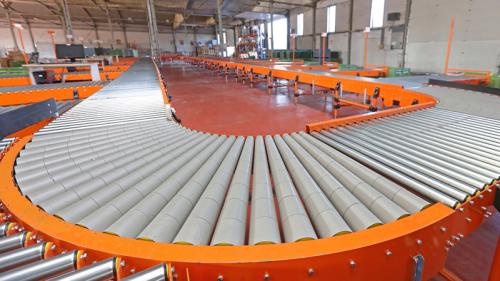Conveyor Rollers And How They Work

In the world of industrial automation and material handling, conveyor systems play a pivotal role in streamlining processes and enhancing efficiency. Among the various components that make up a conveyor system, conveyor rollers stand out as crucial elements that enable the smooth movement of goods. In this comprehensive article, we will delve into the world of conveyor rollers, exploring their design, functionality, and the key role they play in diverse industries. Additionally, we will highlight the importance of reliable conveyor rollers parts suppliers in ensuring the optimal performance and longevity of these essential components.
1. Evolution of Conveyor Systems
The concept of conveyor systems dates back to ancient times when labor-intensive methods were employed for the transportation of goods. Over the years, technological advancements have revolutionized material handling, leading to the development of sophisticated conveyor systems. Today, these systems are integral to industries such as manufacturing, distribution, logistics, and more.
2. Understanding Conveyor Rollers
A. Definition and Purpose
Conveyor rollers are cylindrical devices that facilitate the movement of goods along a conveyor belt. They are strategically positioned underneath the belt, supporting and guiding it to ensure a smooth and controlled transfer of materials. The primary purpose of conveyor rollers is to reduce friction, allowing for the efficient transportation of goods with minimal energy expenditure.
B. Types of Conveyor Rollers
Gravity Rollers: These rollers rely on the force of gravity to move materials along the conveyor. They are often used in areas where a slight decline in elevation is available.
Powered Rollers: Powered by an external source such as an electric motor, these rollers provide a controlled and consistent movement of goods. They are ideal for applications where precise control over the conveyor speed is essential.
Idler Rollers: Idler rollers are non-powered rollers that support the conveyor belt and help maintain its proper tension. They are strategically placed to prevent sagging and ensure optimal belt performance.
C. Materials and Construction
Conveyor rollers are crafted from various materials based on the specific application and environmental factors. Common materials include steel, stainless steel, plastic, and composite materials. The choice of material is influenced by considerations such as load capacity, durability, and resistance to corrosive elements.
3. Anatomy of Conveyor Rollers
A. Core Components
Tube: The cylindrical structure of the roller, typically made of steel or other durable materials, forming the primary load-bearing component.
Bearings: Positioned within the roller tube, bearings facilitate smooth rotation, minimizing friction between the roller and the conveyor belt.
Shaft: The axle or shaft runs through the center of the roller, connecting the bearings and providing stability to the roller assembly.
B. End Caps and Bearings
End Caps: These are protective covers located at each end of the roller, safeguarding the bearings and internal components from contaminants and environmental elements.
Post Your Ad Here
Comments